From Virgin Marys to vibrators: the new dawn of glass-staining
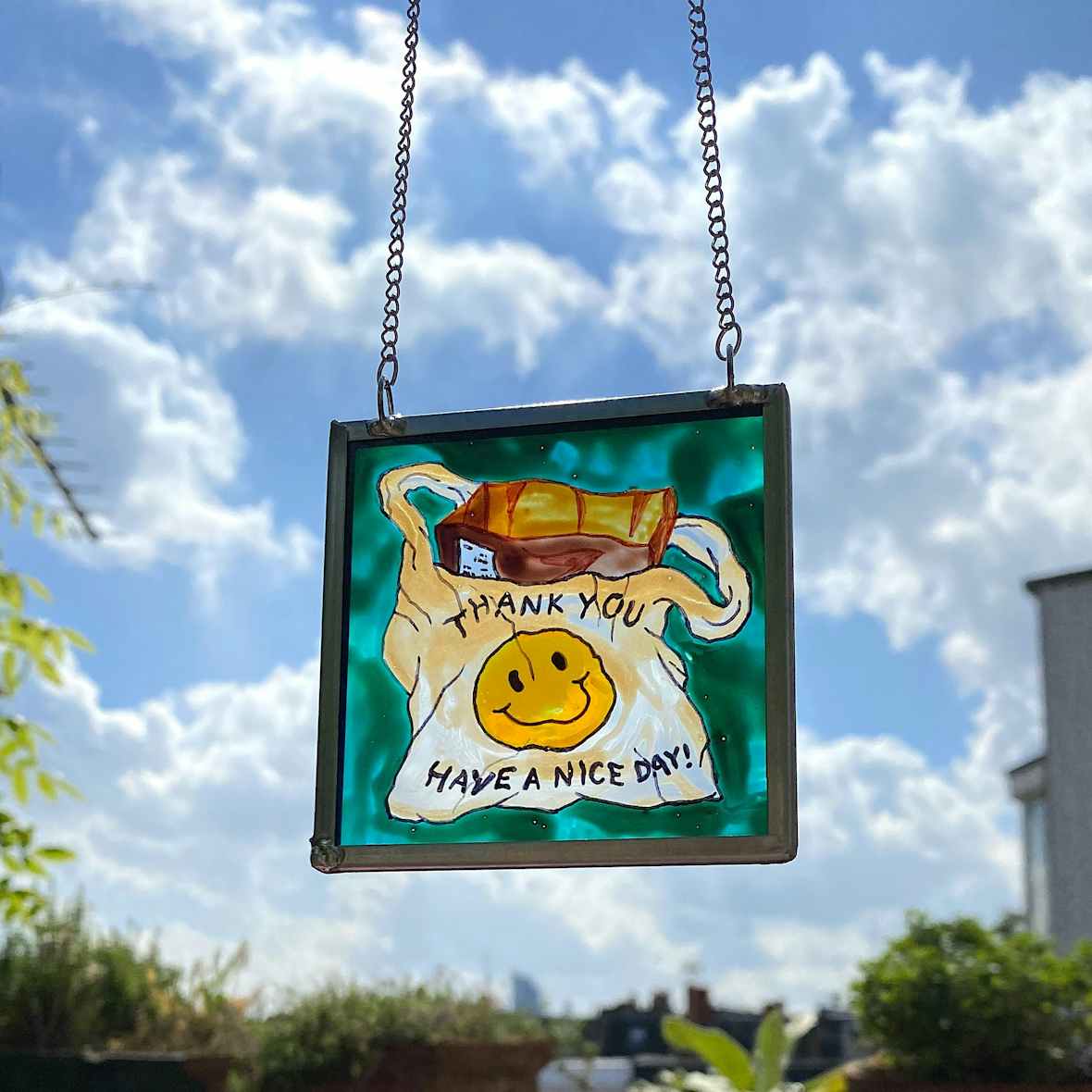
Artists like Harry Duddridge and Esme Blegvad turn the traditional medium of stained glass on its head, creating sexy, pop culture-inspired pieces that look good enough to eat.
Culture
Words: Jade Wickes
The last 18 months, it’s fair to say, have been relentless. The knock-on effects of stop-start lockdowns, persistent coronavirus waves and long stints spent on furlough have, at best, been disorienting and, at worst, devastating. But in the midst of all the chaos, creativity has blossomed and the pandemic has spawned a DIY revolution.
Brits up and down the country have been taking up all sorts of crafty hobbies, from rug-making and cake baking to alcohol brewing and everything in between. Perhaps most esoterically of all, a handful of artists have been trying their hand at the elaborate medium of glass-staining.
Less ye olde – the type you’d find in churches or monasteries – these pieces bring this traditional craft firmly into the 21st century. Harry Duddridge, whose hospitality job came to a grinding halt at the start of the pandemic, is just one of the people breaking the, er, glass ceiling on all that contemporary glass-staining can and should be.
“I find [glass-staining] really exciting,” the 24-year-old East Londoner says. “It’s such a beautiful art form and I want to keep it alive. The materials are quite resilient and the whole process gives me a lot of satisfaction.”
One of Duddridge’s stand-out pieces is a stained glass version of MF DOOM’s mask, a fitting tribute to the hip-hop legend. “Music is a really big part of my life, so incorporating it into everything I do is a necessity,” he continues, having also crafted otherworldly seascapes and playful homages to London’s transport system. Blue Bullet, “a tribute to the Viccy line”, is Duddridge’s favourite.
That being said, he still has a great appreciation for traditional stained glasswork. “I love the rich and decadent windows that you see in churches, the stories that they tell and the quality of craftsmanship behind them,” he says. “Without saying too much, I’m working on a series inspired by traditional, religious stained-glass windows, but with a pop culture twist. It involves a lot of glass painting and some kiln action.”
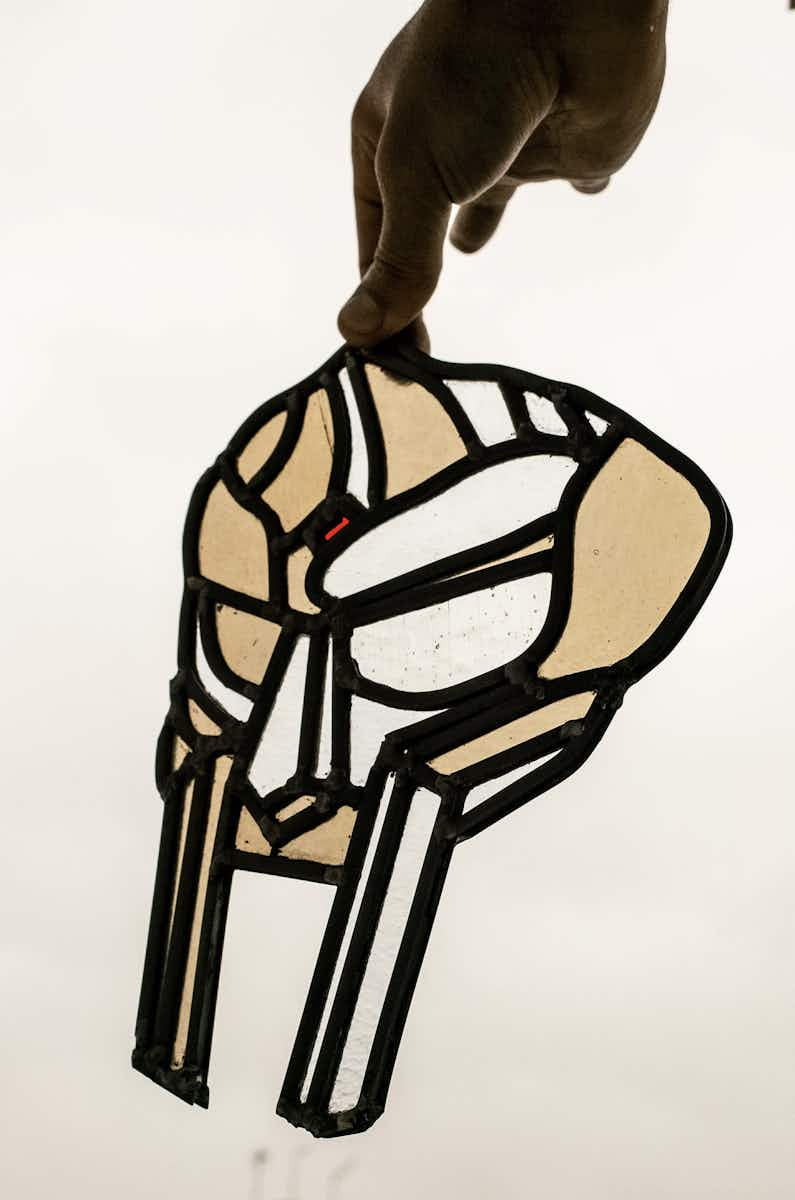
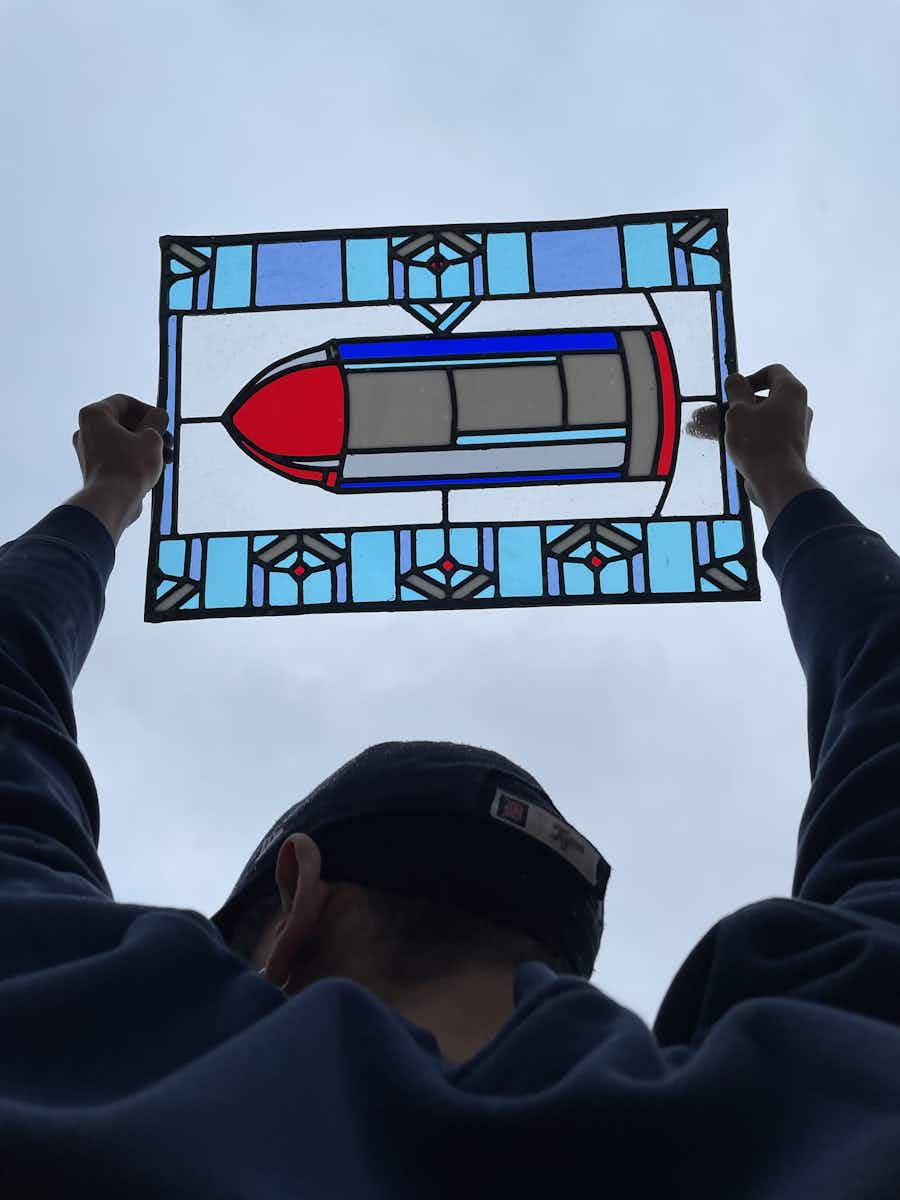
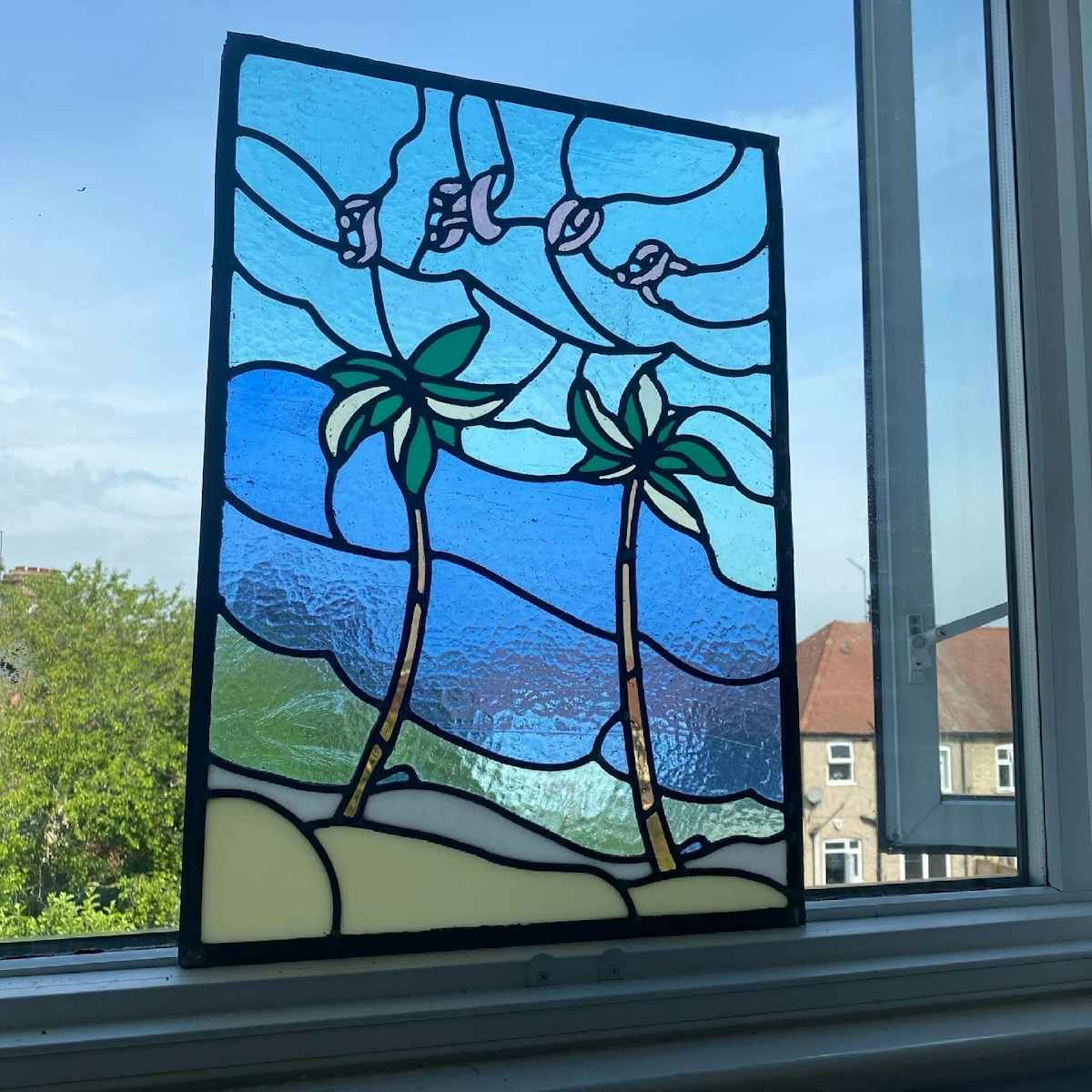
The physical process of bringing a stained-glass piece to life is labour intensive, and involves a lot of trial and error. “I’ve made windows before that have almost fallen apart after being cemented, or made designs only to realise that the glass doesn’t cut in the shapes that you want it to,” Duddridge says. “It’s quite long, but it’s great fun and you have to be dedicated.”
Esme Blegvad, a 30-year-old artist based between London and New York, can attest to the rewarding nature of the glass-staining process. Like Duddridge, she started staining glass as a pandemic-induced, “soothing” hobby, which she started messing around with after spotting glass paint in a pound shop. Shortly after, her DIY shop Glarse was born.
“I felt inexplicably drawn to the idea of painting on glass instead of paper and once I started I couldn’t stop,” Blegvad says. As a self-taught commercial illustrator and animator, she saw many projects fall through as a result of Covid. Glass staining formed the perfect meditative, comforting pastime.
“Glass was totally unexplored territory,” she continues. “It felt much more experimental and enticing in a way that felt much more valuable.” Blegvad’s pieces have a whimsical, comic book quality to them. Some are large, still life pieces: sitting on a bed, surrounded by junk, scrolling on a phone while watching Real Housewives. Others depict abstract life drawings or cornershop plastic bags, often imbued with themes of mental illness, grief and pop culture.
Most of all, Blegvad is drawn to the iconographic quality of stained glass, “the extra-ness of it, of going so far as to portray something through the crazy medium of cut up bits of glass.” She enjoys subverting the idea that something isn’t art just because you made it in your bedroom, in the simplest way possible. And what makes something valuable enough to do that, she asks? “The Virgin Mary? A vibrator? My bestselling piece is a glass panel of a pack of Jaffa Cakes, so…” Blegvad says, answering her own question.
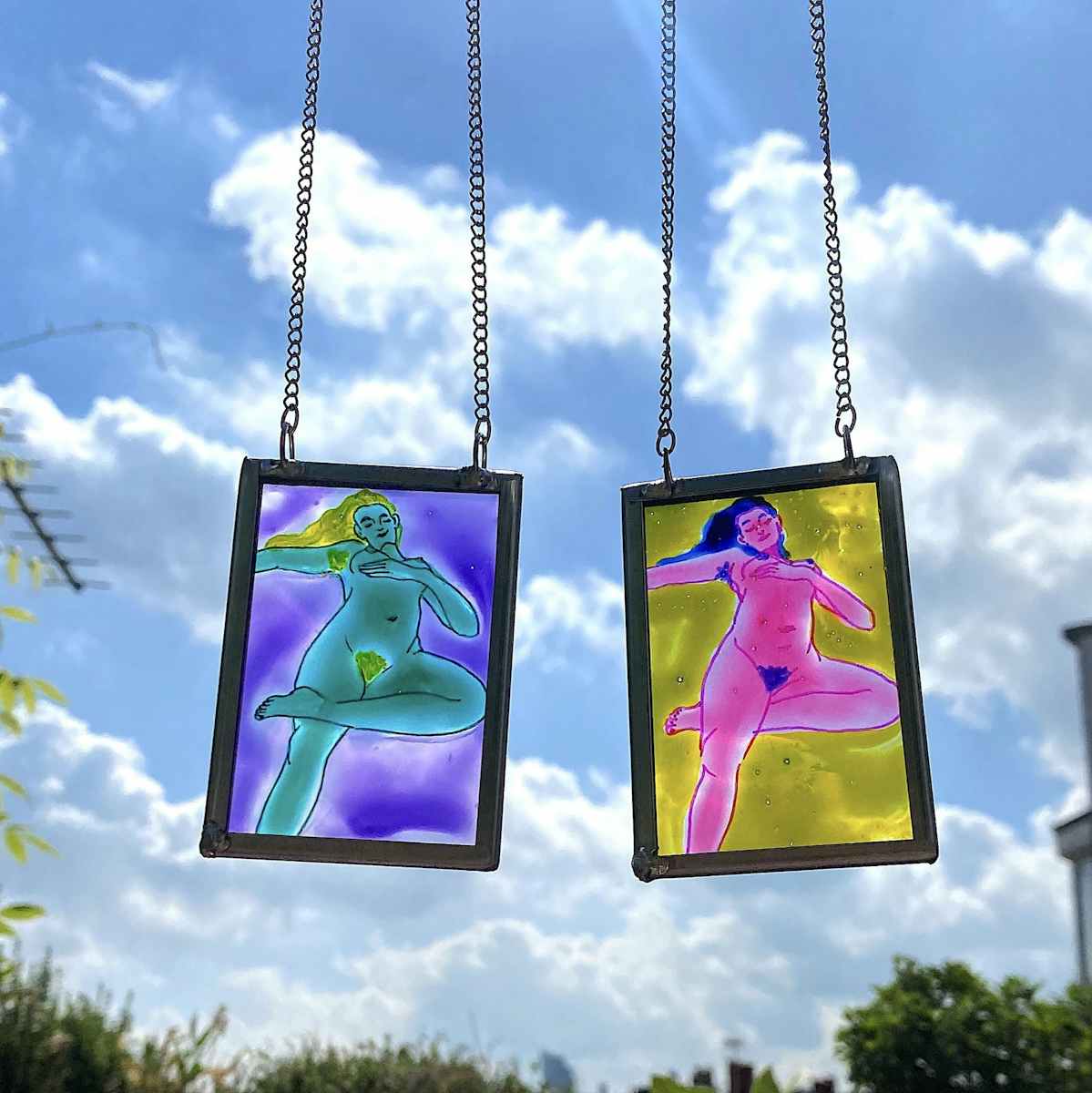
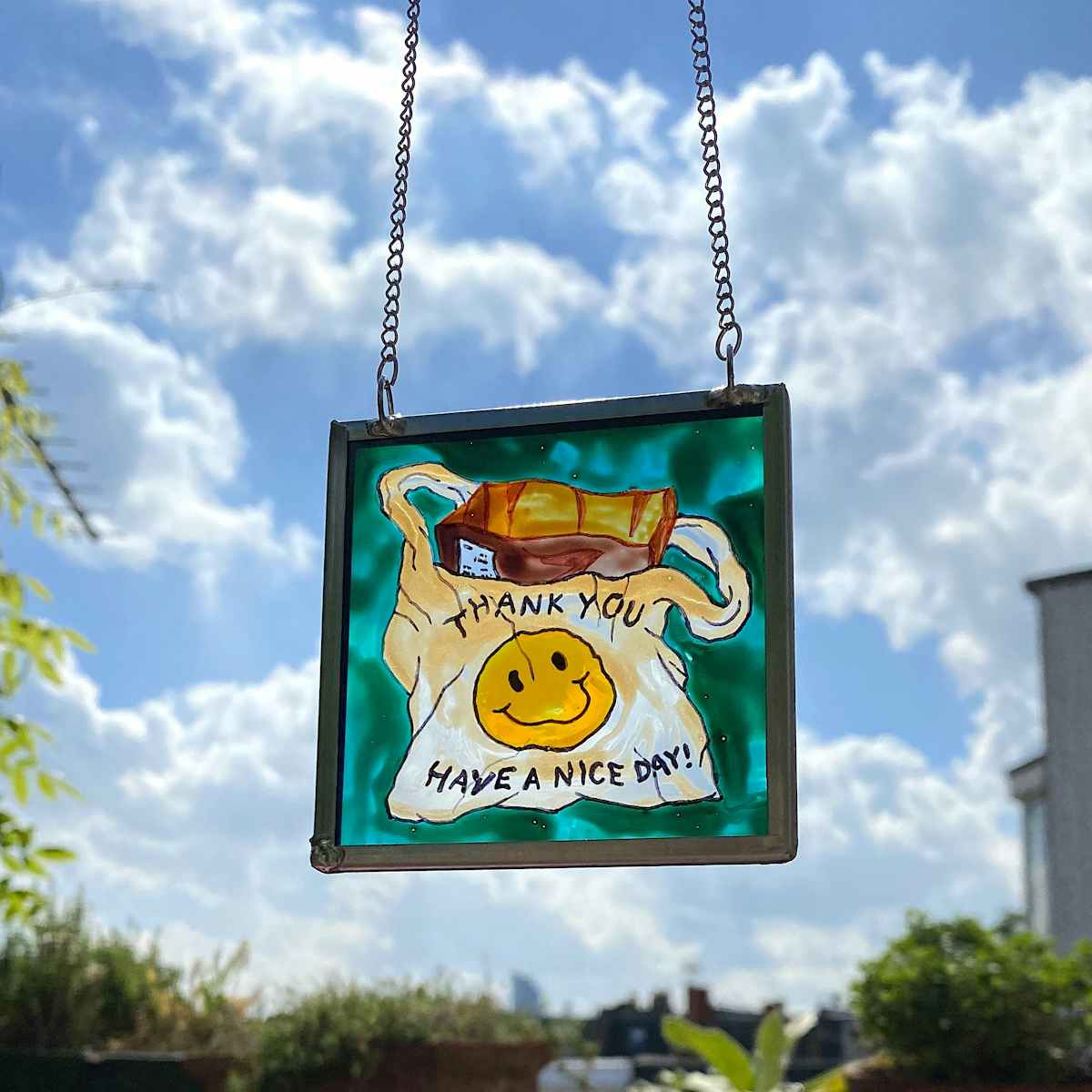
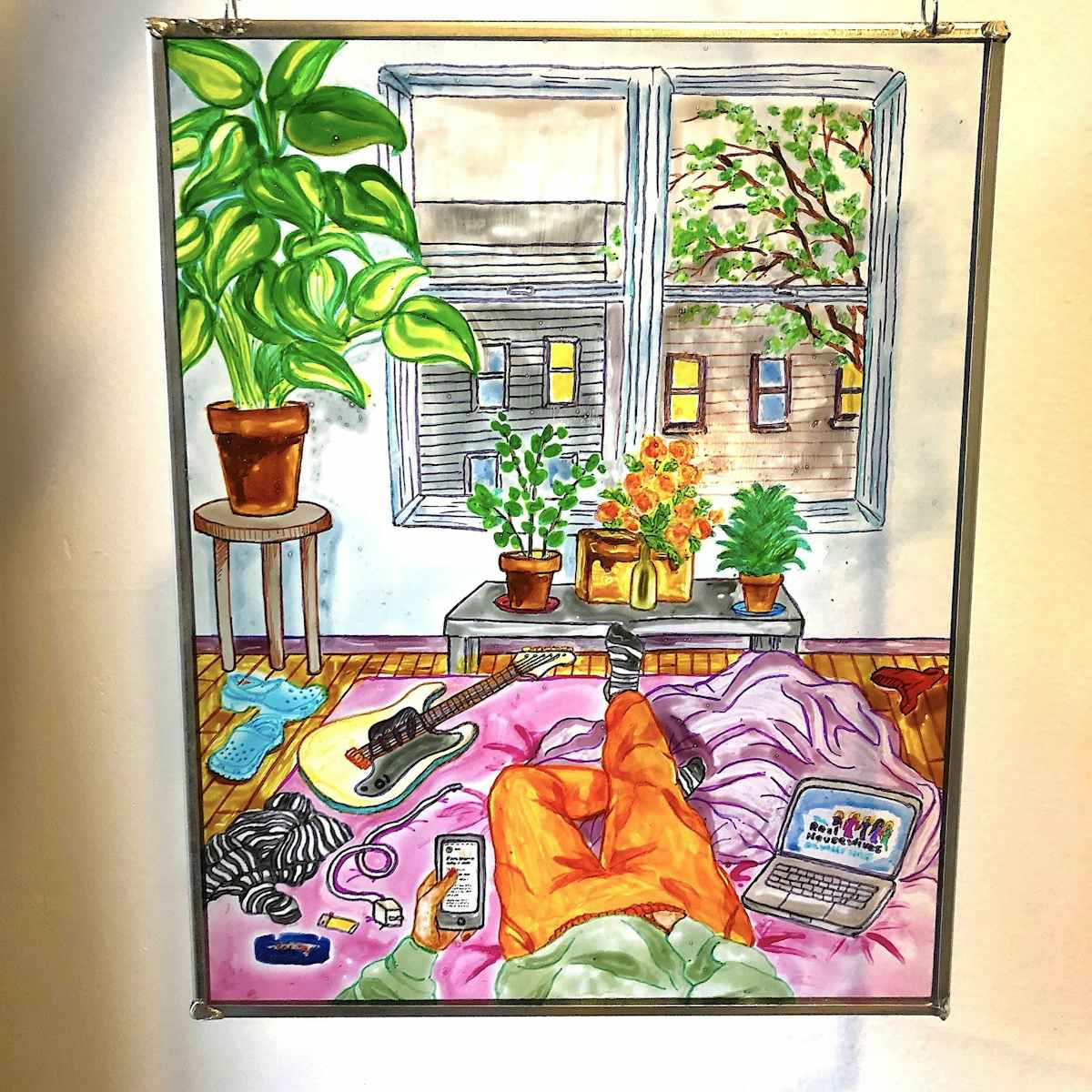
Even though she describes the process of glass-staining – which Blegvad taught herself almost entirely via YouTube – as largely “mindless” and therapeutic, she finds the whole process quite profound and meaningful.
“One of my earliest aesthetic references is a purple stained glass piece shaped like a balloon, which was in the window of my granny’s kitchen growing up,” she says. “I was obsessed with looking at it, but it went deeper than that. I kind of wanted to be this balloon, or to live inside it. Above all, I wanted to lick it and stained glass still kind of incites this babyish desire in me.”
Secret fantasies of chowing down on stained glass aside, Blegvad sees more value in the medium of glass staining than, say, an ordinary canvas painting. “It’s fragile and singular, it’s got a bit of gravitas,” she continues.
“Loads of my illustration work exists in a digital format that can be duplicated, whereas each piece of glass, even when replicated from the same stencil, is inherently unique. It’s very easy to destroy and if it breaks, it’s gone. There’s something special and alluring about that to me.” The magic has only just begun.







